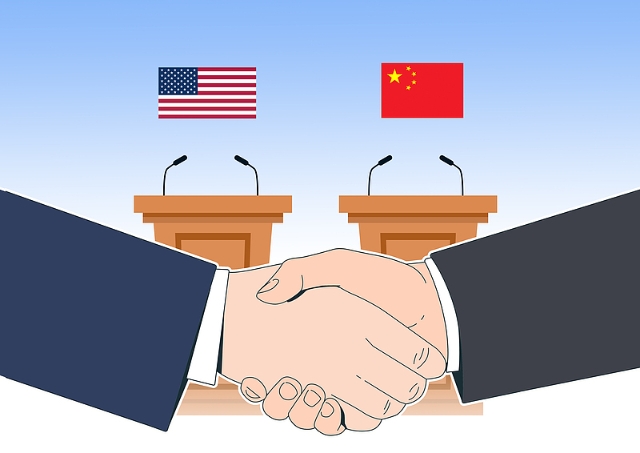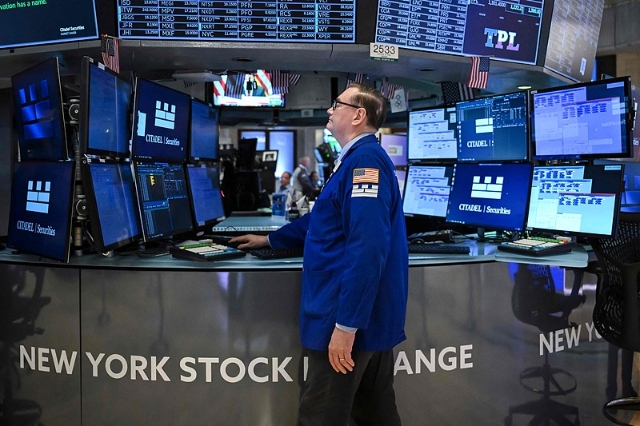After a two-day negotiation between the world's two largest economies, China and the U.S. ultimately agreed to de-escalate the ongoing tariff wars unilaterally initiated by the U.S.
Geneva, the headquarters of the World Trade Organization (WTO), was selected as the negotiation venue and has offered the world a silver lining to the global trade suffering from Trump's capricious tariffs.

(Photo: CFP)
Based on the joint statement from the China-U.S. economic and trade meeting released on May 12, the two countries committed to canceling 91% of tariffs by May 14.
Regarding the 34% reciprocal tariffs imposed by the U.S. on China, and the ensuing 34% counter-tariffs that China levied on the U.S., both sides will suspend 24% for an initial period of 90 days, to be further resolved, while retaining the remaining ad valorem rate of 10%.
In addition, China will adopt necessary administrative measures to suspend or remove the non-tariff countermeasures taken against the U.S. since April 2. On May 13, Bloomberg reported that China had removed a month-long ban on airlines taking delivery of Boeing planes.
The global markets reacted positively once the statement was unveiled. In the Asia-Pacific, Hong Kong stocks led the gains, closing up nearly 3%. Shenzhen and Shanghai stocks rose 1.7% and 0.82%, respectively. Seoul stocks added 1.17%.
In the U.S. markets, the Nasdaq Composite led gains, rocketing up 4.3%. The S&P 500 surged over 3% to its highest level since March 3. The Dow Jones Industrial Average gained 2.8%.
In European stock markets, Germany's DAX share index rose 1.5% to a record high, the regional STOXX 600 added 1.1%, and Italy's FTSE MIB gained over 2% to its highest since 2007.

Traders work on the floor of the New York Stock Exchange at the opening bell on May 12, 2025, in New York. (Photo: CFP)
Since Trump came to power in January this year, the United States has returned to mercantilism as Trump seeks to resolve U.S. trade deficits with other countries and bring manufacturing back domestically. He has levied rounds of tariffs on various countries and industries to achieve his goals, but with little success.
Data shows that the U.S. trade deficit widened in the first quarter (Q1) of this year. The U.S. Census Bureau and the U.S. Bureau of Economic Analysis announced a week ago that the goods and services deficit was $140.5 billion in March, rising 8% from February. Notably, the United States' GDP in Q1 fell 0.3%, according to a U.S. Commerce Department report, largely due to a costly trade war.
To add insult to injury, Trump's tariffs have expanded to create a spillover effect worldwide, impeding global trade among countries. According to the Global Trade Outlook and Statistics report released in mid-April by the WTO, the outlook for global trade has "deteriorated sharply" due to a surge in tariffs and ensuing trade policy uncertainty.
With the 90-day suspension of “reciprocal tariffs” in place, the volume of world merchandise trade is now expected to decline by 0.2% in 2025 before posting a modest recovery of 2.5% in 2026.
In response to Trump's tariffs, China has reacted in a measured way, underpinned by WTO rules. For each round of tariffs imposed by the U.S., China has requested WTO dispute consultations for settlement.
Additionally, in mid-April, China announced Li Chenggang as the new trade negotiator and vice minister of commerce. As China's former representative to the WTO and a seasoned negotiator on global trade, this strategic appointment has paved the way for possible negotiations between the two sides at the right time.

Made-in-China patriotic hats are offered for sale at a big box retailer on May 12, 2025, in Chicago, Illinois. (Photo: CFP)
Contrary to becoming persona non grata as the U.S. has done, China has embraced more trade partners to safeguard multilateralism and the world economy.
In Q1 of 2025, ASEAN remains China's largest trading partner, with total trade reaching $234.17 billion, rising 7.1% year-on-year, which accounts for 16.6% of China's overall foreign trade.
Correspondingly, Chinese private enterprises' imports and exports to about 180 countries and regions increased in Q1 this year. In emerging markets, imports and exports to ASEAN, Africa, and Latin America increased by 7.4%, 9.6%, and 5.2%, respectively. In traditional markets, imports and exports to the EU increased by 7.1%, and to Japan by 4.8%.
Prior to the long-expected China-U.S. trade talks, WTO Director General Ngozi Okonjo-Iweala expressed her support for the negotiations between the two sides as a positive and constructive step toward alleviation.
The negotiation in Geneva is a good start for ongoing dialogues between the two largest economies worldwide. The process ahead may not be seamless, though. We hope Mr. Trump and his administration may genuinely embrace the art of the deal to save the current world economy, disrupted by his tariff policies.
Author: Zhang Ruijun
Editor: Yuan Zixiang, James, Shen He
















